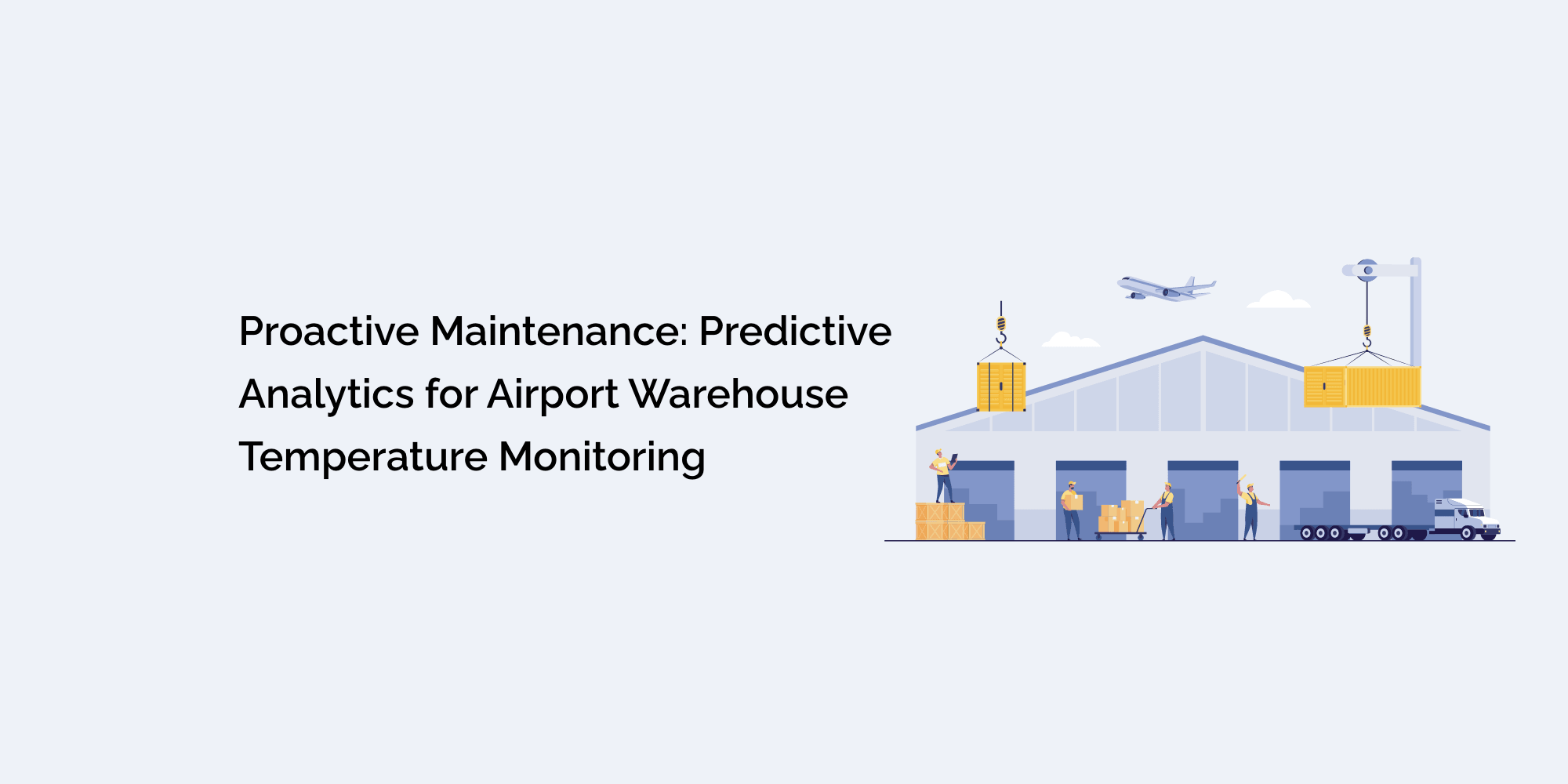In the fast-paced world of aviation and cargo transportation, airport warehouses play a crucial role in ensuring the smooth and efficient movement of goods. To maintain the integrity and quality of temperature-sensitive cargo, such as pharmaceuticals, perishable goods, and electronics, it is vital to have a robust temperature monitoring system in place. Traditional methods of monitoring, while essential, often fall short of identifying potential issues before they escalate. This is where predictive analytics comes into play.
Predictive analytics leverages historical data, real-time monitoring, and advanced algorithms to proactively identify trends and potential anomalies in temperature conditions.
In this blog, we will explore the concept of proactive maintenance through predictive analytics for airport warehouse temperature monitoring. We will delve into the benefits of this approach, its implementation process, and its potential to revolutionize temperature control in airport warehouses.
The Need for Proactive Maintenance in Airport Warehouses
1.1 Limitations of Traditional Temperature Monitoring
Conventional temperature monitoring in airport warehouses relies on periodic checks, manual data entry, and reactive responses to deviations from set thresholds. While this approach is better than having no monitoring at all, it does have limitations. Temperature fluctuations can occur rapidly and unpredictably, leading to potential damages to temperature-sensitive cargo before an issue is detected and addressed.
1.2 The Promise of Predictive Analytics
Proactive maintenance through predictive analytics offers a paradigm shift in warehouse temperature monitoring. By analyzing vast amounts of historical data and real-time sensor information, predictive analytics can forecast temperature trends and detect anomalies before they result in critical temperature excursions. This data-driven approach not only saves time and resources but also minimizes the risk of product spoilage, financial losses, and regulatory non-compliance.
Advantages of Proactive Maintenance with Predictive Analytics
2.1 Early Detection of Temperature Anomalies
Predictive analytics models continuously analyze temperature data to identify patterns and trends. When an anomaly is detected, the system can alert warehouse personnel immediately, enabling them to take proactive measures before the situation escalates. This early detection can significantly reduce the likelihood of damage to temperature-sensitive cargo.
2.2 Optimal Resource Allocation
By proactively identifying potential temperature issues, warehouse managers can allocate resources more efficiently. For instance, they can prioritize maintenance efforts for areas most likely to experience temperature fluctuations, ensuring a more targeted and cost-effective approach.
2.3 Enhanced Decision-making
Predictive analytics provides valuable insights into temperature control, enabling data-driven decision-making. Warehouse managers can use historical and real-time data to optimize warehouse layouts, adjust temperature control settings, and implement preventive measures based on analytical recommendations.
2.4 Improved Compliance with Regulatory Standards
Airport warehouses handling pharmaceuticals and other temperature-sensitive goods are subject to stringent regulatory requirements. Predictive analytics can help warehouses maintain compliance by providing a proactive and data-backed approach to temperature monitoring, reducing the risk of regulatory violations.
Implementing Predictive Analytics for Airport Warehouse Temperature Monitoring
3.1 Data Collection and Integration
The foundation of any predictive analytics system is data. To implement predictive maintenance for temperature monitoring, warehouses must first collect and integrate relevant data sources. These may include historical temperature records, sensor data, weather patterns, and other factors that could influence temperature fluctuations.
3.2 Selection of Predictive Models
Choosing the appropriate predictive analytics models is crucial for accurate and reliable predictions. Machine learning algorithms, such as regression, time-series analysis, and artificial neural networks, are commonly used for temperature forecasting and anomaly detection. The selected models should be trained and validated using historical data to ensure their effectiveness.
3.3 Real-time Monitoring and Alerts
To maximize the benefits of proactive maintenance, real-time temperature monitoring is essential. Wireless sensors placed strategically throughout the warehouse can continuously collect temperature data and transmit it to a central analytics platform. The system should be equipped to send immediate alerts when temperature anomalies or deviations from set thresholds are detected.
3.4 Integration with Maintenance Management Systems
Proactive maintenance through predictive analytics should be seamlessly integrated with existing maintenance management systems. This allows warehouse managers to assign tasks, track maintenance progress, and prioritize actions based on predictive analytics insights.
Overcoming Challenges and Ensuring Success
4.1 Data Quality and Availability
The success of predictive analytics relies heavily on the quality and availability of data. Warehouses must ensure that their data is accurate, relevant, and comprehensive. Implementing data quality checks and investing in data infrastructure upgrades may be necessary to overcome data-related challenges.
4.2 Skill and Expertise
To implement predictive analytics successfully, warehouses may need to invest in the training and development of staff with expertise in data analytics, machine learning, and related fields. Alternatively, they can collaborate with external experts or technology providers to bridge the skills gap.
4.3 System Integration and Scalability
Warehouse temperature monitoring systems often consist of various components and technologies. Integrating predictive analytics seamlessly into the existing infrastructure may require careful planning and coordination. Additionally, the system should be scalable to accommodate future expansion and increased data volume.
Conclusion
Proactive maintenance through predictive analytics is a game-changer for airport warehouse temperature monitoring. By harnessing the power of data-driven insights, airport warehouses can revolutionize their approach to temperature control, ensuring the integrity and quality of temperature-sensitive cargo.
Early detection of temperature anomalies, optimal resource allocation, improved decision-making, and enhanced compliance with regulatory standards are among the many benefits this approach offers.
While implementing predictive analytics may present some challenges, the potential rewards make it a worthy investment for any airport warehouse seeking to optimize its temperature control processes and enhance overall efficiency in the handling of temperature-sensitive goods.








